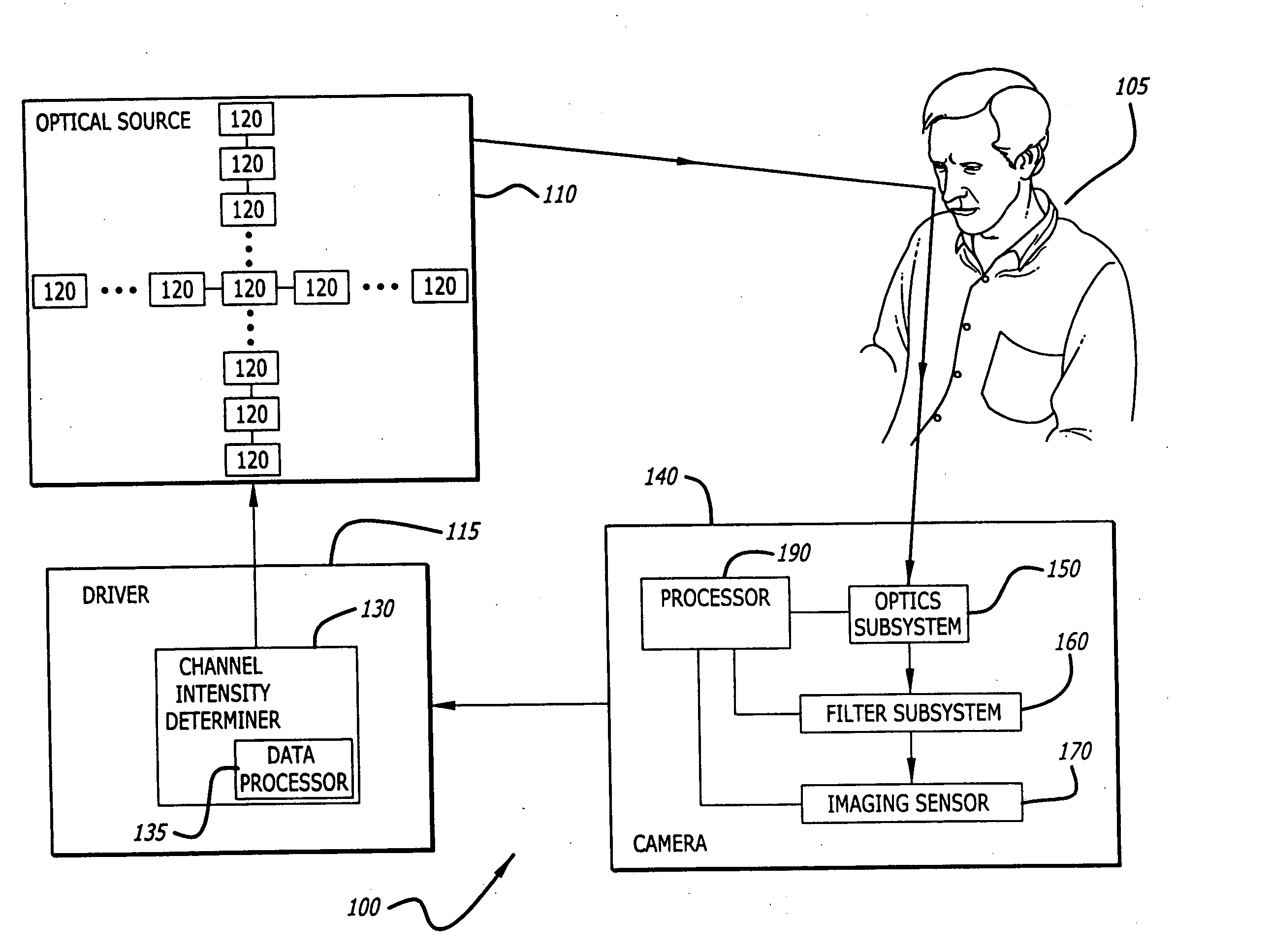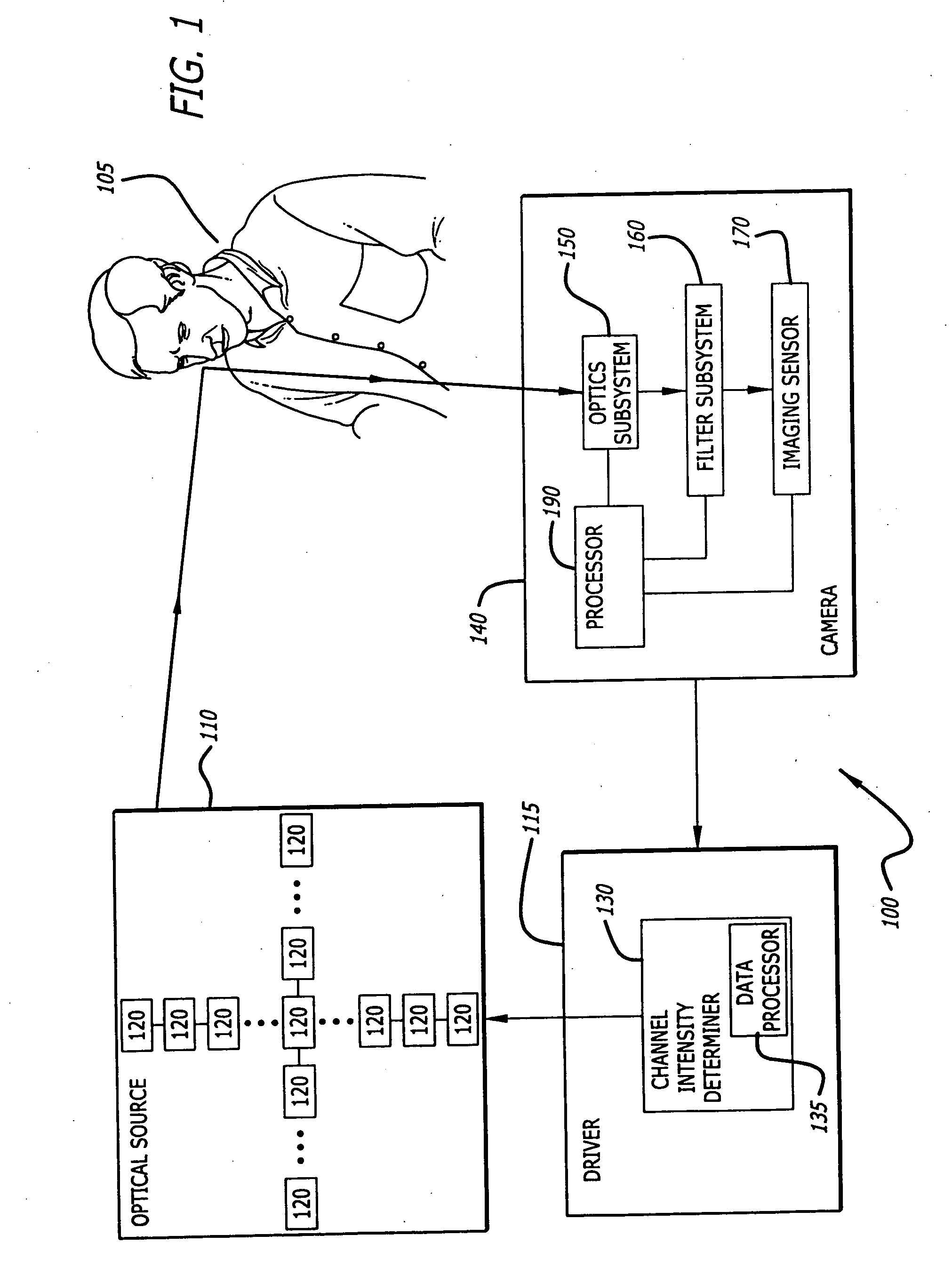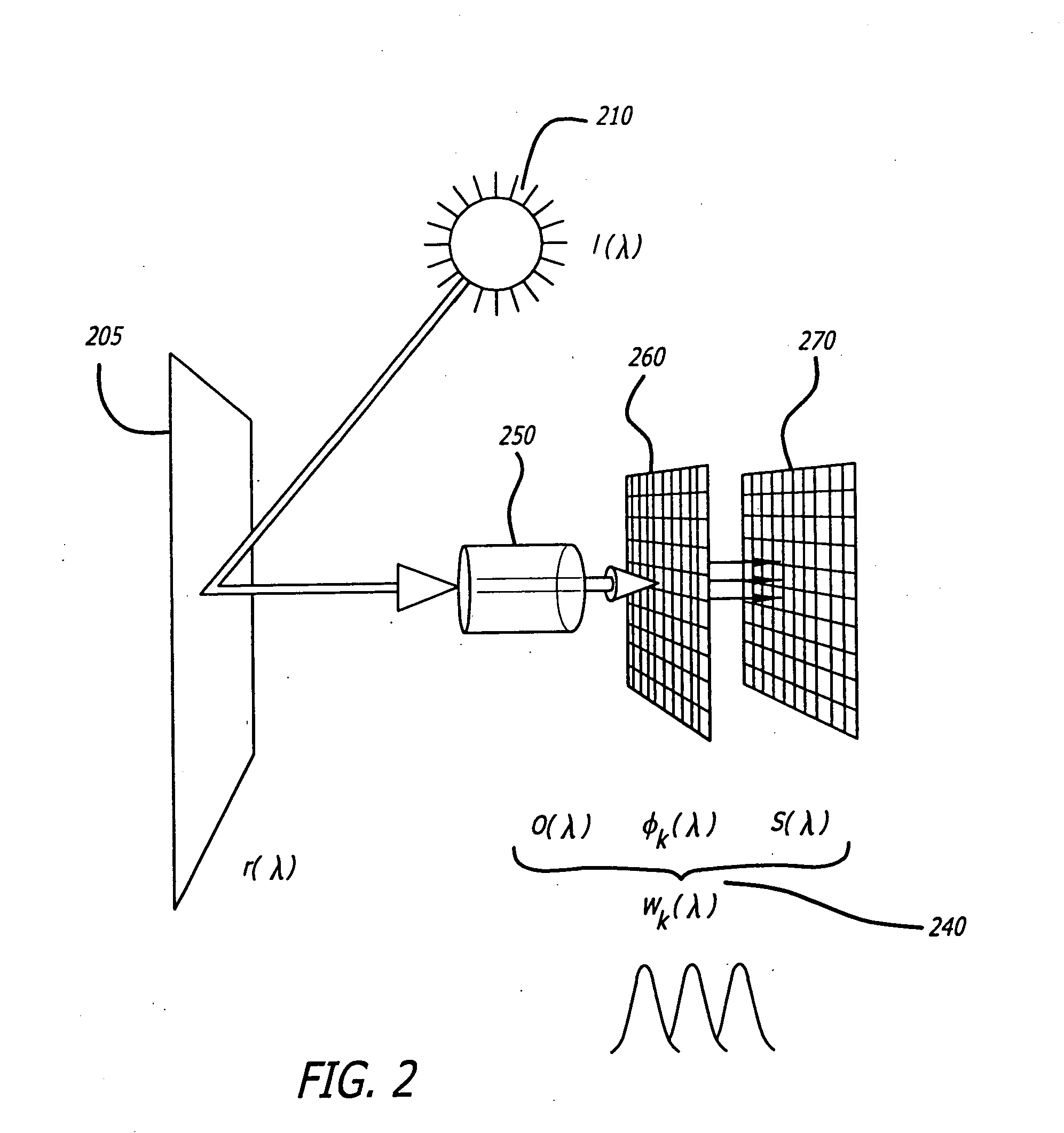Color matching in lighting reproduction systems
a lighting reproduction and color matching technology, applied in the field of lighting reproduction, can solve the problems of complex spectral properties of real-world illumination and subjects, difficult to accurately compute the color of light reflecting from a surface of a subject, and difficult to accurately reproduce the appearance of a subject under complex real-world illumination spectra such as tungsten and fluorescent lighting using just rgb lights
- Summary
- Abstract
- Description
- Claims
- Application Information
AI Technical Summary
Benefits of technology
Problems solved by technology
Method used
Image
Examples
Embodiment Construction
A method and apparatus is described for improving color matching in lighting reproduction systems. The SIM (Spectral Illuminant Matching) technique is described, in which the LED spectral channels are driven so as to optimally match the spectra of the desired illuminant. The MIM (Metameric Illuminant Matching) technique is described, in which the spectral response of the camera is measured, and the LED spectral channels are driven so as to produce a metameric match with the desired illuminant, as seen by the camera, rather than a direct match with the desired illuminant spectra. The MRM (Metameric Reflectance Matching) technique is described, in which the dominant spectral reflectances of the subject are measured, in addition to the spectral response curves of the camera, and the LED spectral channels are driven so that the subject's reflection of the light from the LED-based optical source, as observed by the camera, is metameric to the subject's reflection of the desired illuminan...
PUM
| Property | Measurement | Unit |
|---|---|---|
| optical imaging | aaaaa | aaaaa |
| spectral power distribution | aaaaa | aaaaa |
| imaging | aaaaa | aaaaa |
Abstract
Description
Claims
Application Information
 Login to View More
Login to View More - R&D
- Intellectual Property
- Life Sciences
- Materials
- Tech Scout
- Unparalleled Data Quality
- Higher Quality Content
- 60% Fewer Hallucinations
Browse by: Latest US Patents, China's latest patents, Technical Efficacy Thesaurus, Application Domain, Technology Topic, Popular Technical Reports.
© 2025 PatSnap. All rights reserved.Legal|Privacy policy|Modern Slavery Act Transparency Statement|Sitemap|About US| Contact US: help@patsnap.com



